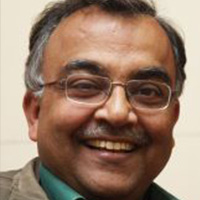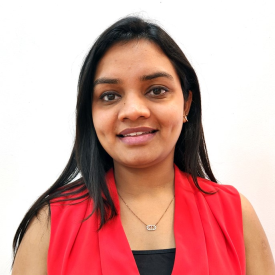Kerala’s silent crisis: Educated youth, but locked out of work
Despite performing well in terms of educational access and attainment, the southern state of Kerala exhibits very high rates of youth who are not in education, employment, or training. Based on qualit...
-
 Isha Gupta
Isha Gupta  28 August, 2025
28 August, 2025
- Notes from the Field
When fathers migrate: Does It benefit or disrupt left-behind children’s education?
While studies have explored the impact of male out-migration on left-behind women, there is limited evidence on the effects on children. Analysing data from eastern Uttar Pradesh and Bihar, this artic...
-
 Pintu Paul
Pintu Paul  04 August, 2025
04 August, 2025
- Articles
Making vocational training more effective at improving youth employment outcomes
Youth unemployment remains a significant challenge in India, with large-scale public skilling programmes achieving limited success in improving labour-market outcomes. This article explains the approa...
-
 Evan Borkum
Evan Borkum  Irina Cheban
Irina Cheban  Edith Felix
Edith Felix  16 July, 2025
16 July, 2025
- Articles
Teacher development and school performance: Seven lessons from schools that do well
While the centrality of teachers’ role in the learning process at schools is widely recognised, challenges on the ground come in the way of quality outcomes. Based on preliminary insights from a pil...
-
 Amarjeet Sinha
Amarjeet Sinha  04 September, 2025
04 September, 2025
- Notes from the Field
Kerala’s silent crisis: Educated youth, but locked out of work
Despite performing well in terms of educational access and attainment, the southern state of Kerala exhibits very high rates of youth who are not in education, employment, or training. Based on qualit...
-
 Isha Gupta
Isha Gupta  28 August, 2025
28 August, 2025
- Notes from the Field
When fathers migrate: Does It benefit or disrupt left-behind children’s education?
While studies have explored the impact of male out-migration on left-behind women, there is limited evidence on the effects on children. Analysing data from eastern Uttar Pradesh and Bihar, this artic...
-
 Pintu Paul
Pintu Paul  04 August, 2025
04 August, 2025
- Articles
Making vocational training more effective at improving youth employment outcomes
Youth unemployment remains a significant challenge in India, with large-scale public skilling programmes achieving limited success in improving labour-market outcomes. This article explains the approa...
-
 Evan Borkum
Evan Borkum  Irina Cheban
Irina Cheban  Edith Felix
Edith Felix  16 July, 2025
16 July, 2025
- Articles
India’s primary healthcare reform: Improved service delivery, reduced mortality
On average, a 60-year-old in India can expect to live for about 19 years, four years less than their counterparts in high-income countries – with the gap being partly driven by poor access to qualit...
-
 Patrick Agte
Patrick Agte  Jitendra Kumar Soni
Jitendra Kumar Soni  28 May, 2025
28 May, 2025
- Articles
Youth’s digital readiness in rural India
As India undergoes rapid technological transformation, digital literacy has become a key driver of youth’s preparedness for future educational, economic, and social opportunities. In this note, Kuma...
-
 Shweta Bhutada
Shweta Bhutada  Deepak Kumar
Deepak Kumar  08 May, 2025
08 May, 2025
- Notes from the Field
Lighting the path to learning: Can electricity boost children’s test scores?
When households gain access to electricity, children are more likely to be enrolled in school. But do they also perform better? Based on West Bengal’s universal household electrification programme a...
-
 Somdeep Chatterjee
Somdeep Chatterjee  Shiv Hastawala
Shiv Hastawala  Jai Kamal
Jai Kamal  23 April, 2025
23 April, 2025
- Articles
Reflections on how the New Education Policy plays out in the classroom
The National Education Policy, 2020 emphasises the acquisition of foundational literacy and numeracy by Standard 2. Yet, little is known about how the related initiatives have translated into changes ...
-
 Suman Bhattacharjea
Suman Bhattacharjea  Shweta Bhutada
Shweta Bhutada  Akanksha Bisht
Akanksha Bisht  26 March, 2025
26 March, 2025
- Notes from the Field
The unintended effect of alcohol prohibition on adolescents’ mental health
Alcohol consumption is typically initiated during adolescence, with long-lasting implications on adult health, economic stability, and well-being. Analysing Bihar’s alcohol ban, this article finds a...
-
 Khushboo Aggarwal
Khushboo Aggarwal  Rashmi Barua
Rashmi Barua  Rajdeep Chaudhuri
Rajdeep Chaudhuri  Marian Vidal-Fernandez
Marian Vidal-Fernandez  21 March, 2025
21 March, 2025
- Articles
ASER 2024: More than a post-pandemic recovery in learning
The Annual Status of Education Report (ASER) 2024 reports on children’s schooling status and reading and arithmetic levels from almost all rural districts of India. In this post, Wilima Wadhwa, Dire...
-
 Wilima Wadhwa
Wilima Wadhwa  12 March, 2025
12 March, 2025
- Perspectives
Enhancing foundational learning through parent-teacher collaboration
Despite advancements in primary school enrolment, over 50% of pupils in rural India fail to achieve core literacy, while 44% lack numeracy skills at the end of grade 5. Based on a randomised experimen...
-
 Ricardo Sabates Aysa
Ricardo Sabates Aysa  Deepak Kumar
Deepak Kumar  Naveen Sunder
Naveen Sunder  Wilima Wadhwa
Wilima Wadhwa  24 February, 2025
24 February, 2025
- Articles
The wide-ranging benefits of India’s Public Distribution System
India’s Public Distribution System (PDS) is the world’s largest food transfer programme and India’s most far-reaching social safety net, accounting for 60% of the country’s social assistance b...
-
 Kathy Baylis
Kathy Baylis  Ben Crost
Ben Crost  Aditya Shrinivas
Aditya Shrinivas  17 February, 2025
17 February, 2025
- Articles
Twitter feed
Tweets by Ideas4IndiaMost Popular Human Development Posts
Hindu-Muslim fertility differentials in India: District-level estimates from Census 2011
The 2011 Indian Census data show a higher growth rate of Muslim population compared to the Hindu population. This article provides an in-depth picture of Hindu-Muslim fertility differentials at the di...
 Saswata Ghosh
Saswata Ghosh  27 March, 2019
27 March, 2019
- Articles
Understanding India’s mental health crisis
Since the onset of the Covid-19 pandemic, several reports have indicated a worsening of mental health issues among individuals across age groups. In this post, Michele Mary Bernadine examines the stat...
 Michele Mary Bernadine
Michele Mary Bernadine  06 April, 2021
06 April, 2021
- Perspectives
Ten steps to transform the quality of education in India
In this article, Sridhar Rajagopalan, Managing Director of Educational Initiatives, suggests 10 initiatives that can help transform the quality of education in India.
 Sridhar Rajagopalan
Sridhar Rajagopalan  19 November, 2015
19 November, 2015
- Perspectives





 04 September, 2025
04 September, 2025






